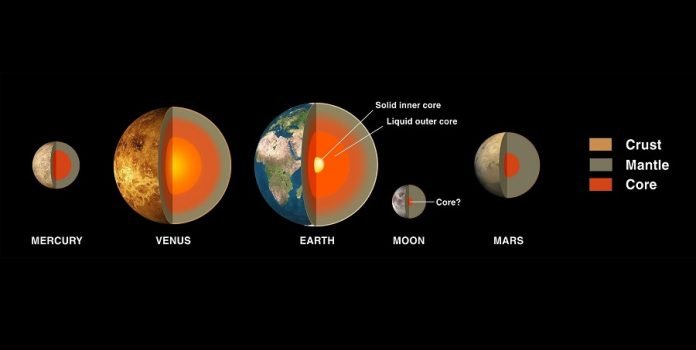
Did you know that deep inside Earth there is another ‘planet’?
Yes, you read it right.
Our home planet, Earth, holds a secret within itself, a solid metal sphere that is textured and different everywhere, sort of like a quilt with many different patches.
It’s not as simple as we used to think, and it’s key to life as we know it on the surface.
This secret planet is known as the Earth’s inner core.
Researchers at the University of Utah, led by Dr. Guanning Pang, have been studying this mysterious region.
Although it’s less than 1% of Earth’s total volume, the inner core is vital for creating our planet’s magnetic field, which protects us from harmful space radiation.
How do these scientists study something that’s hidden deep inside the Earth? They use seismic waves – the waves of energy produced by earthquakes.
Pang and his team studied these waves with data from a network of special detectors placed all over the world.
The detectors were originally set up to look for nuclear explosions, but they’ve also given us a lot of information about what’s happening inside the Earth, as well as about the oceans, atmosphere, and even animals like whales!
The Earth’s inner core is made mostly of iron and some nickel. It’s surrounded by the outer core, which is still liquid.
It’s like the inner core is a little planet, rotating in its own way, surrounded by a sea of molten iron. This movement in the liquid outer core is what creates Earth’s magnetic field, which acts like a shield, protecting us from space radiation.
Dr. Pang and his team used data from 20 groups of detectors, including some in Antarctica and one near Pinedale, Wyoming.
They focused on the seismic waves from more than 2,000 earthquakes that were all stronger than the one that shook Salt Lake City in 2020. By studying how these waves bounced off the inner core, they were able to figure out what it looks like on the inside.
The inner core is changing. At some point in the past, it began to solidify. Scientists aren’t sure when exactly that happened, but they believe that the changes they’ve observed in the inner core tell a story of its history.
“Our biggest discovery is the inhomogeneity tends to be stronger when you get deeper. Toward the center of the Earth it tends to be stronger,” said Pang.
Dr. Keith Koper, another scientist involved in the study, explained, “We think that this fabric is related to how fast the inner core was growing.
A long time ago the inner core grew really fast. It reached an equilibrium, and then it started to grow much more slowly. Not all of the iron became solid, so some liquid iron could be trapped inside.”
Understanding Earth’s inner core is like exploring a new frontier. As scientists continue to study this fascinating part of our planet, we’ll learn more about how Earth formed and evolved – and why it’s the perfect home for us.
What an exciting time to be a scientist or a science enthusiast! As we continue to learn more about our planet, it shows us how much more there is to explore and discover.
The study was published in Nature.
Follow us on Twitter for more articles about this topic.



